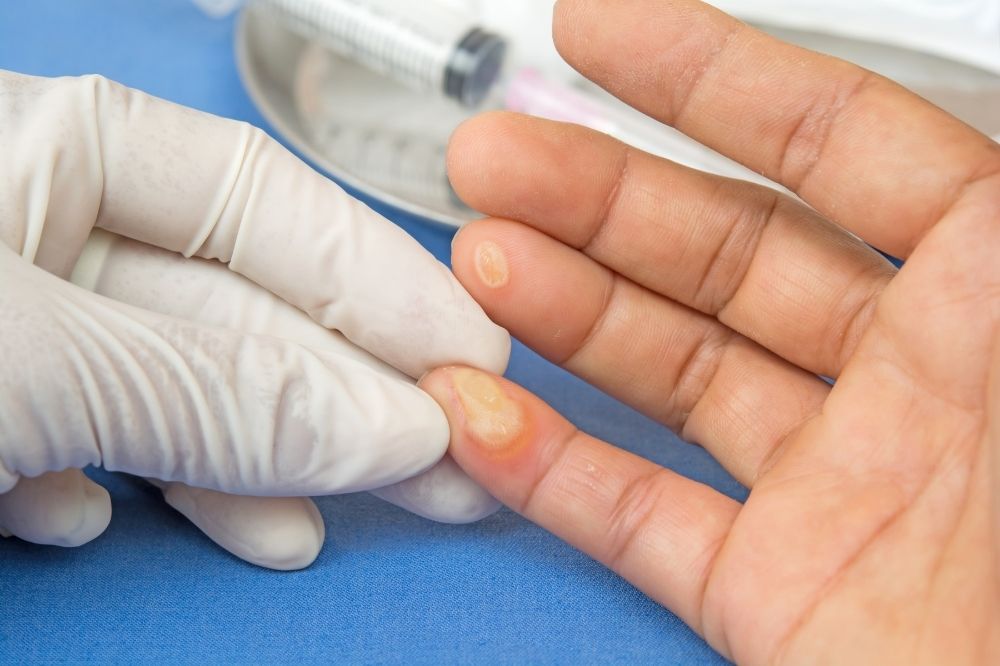What is a wart/verruca?
Warts and verrucas are caused by an infection in the upper layer of the skin with a virus known as HPV (Human Papilloma Virus). It is most commonly seen as skin-colored bumps on the hands, feet, face and genital area. It can occur in any part of the body and can infect another part of the body. It can also be transmitted from person to person by contact and the use of shared items (such as towels, slippers).
Why Does Wart Occur?
The HPV virus is transmitted to the skin of the person by direct contact or by shared objects and areas. Not every HPV infection results in warts. Depending on the immune system, some people become infected, while others do not. If there is an entry point such as an incision or injury on the skin, wart formation is more likely. Children who have been in contact with HPV and people with weakened immune systems are at higher risk of developing warts.
What are the types of warts?
HPV virus settles in different parts of our body and presents with different clinical pictures.
Common wart (Verruca vulgaris); It is the most common type of wart. It occurs on the hands and fingers.
Plantar wart (Verruca pedis); It is a type of wart seen on the sole of the foot. When it is at the pressure points, it can grow into the skin and cause pain.
Flat wart (Verruca plana); flat-surfaced wart type. It is seen in face area.
Filiform wart (Verruca Filiformis); It is a type of wart with a thin-long projections and its ends seen as threadlike protrusions. It is most commonly seen around the face, neck and mouth.
Genital wart (Verruca Acuminata); It is a type of wart seen in the genital area and mostly transmitted sexually. It can also be transmitted through shared underwear and towels that are infected with the virus. Although it is more common in adults, it can rarely be seen in children. It can be passed from mother to baby during birth. Genital warts can cause cervical cancer in women. Therefore, the treatment of genital warts and the cervix (cervix) should be followed closely in women with periodic tests.
What is done in the treatment of warts?
The treatment option varies depending on the age of the patient, the region where the wart is located, the degree of prevalence and the clinical type. The main treatment methods are:
- Cryotherapy (cold therapy)
- Keratolytic and acidic solutions that dissolve the upper layer of the skin
- Laser therapy
How Can I Avoid Warts?
- You should use your own slippers and shoes in common areas such as Turkish bath, sauna and pool.
- In the presence of warts, you should avoid actions such as scratching and plucking, as they will increase the spread.
- You should consult a dermatologist as soon as possible for treatment and to reduce the risk of infecting others.




